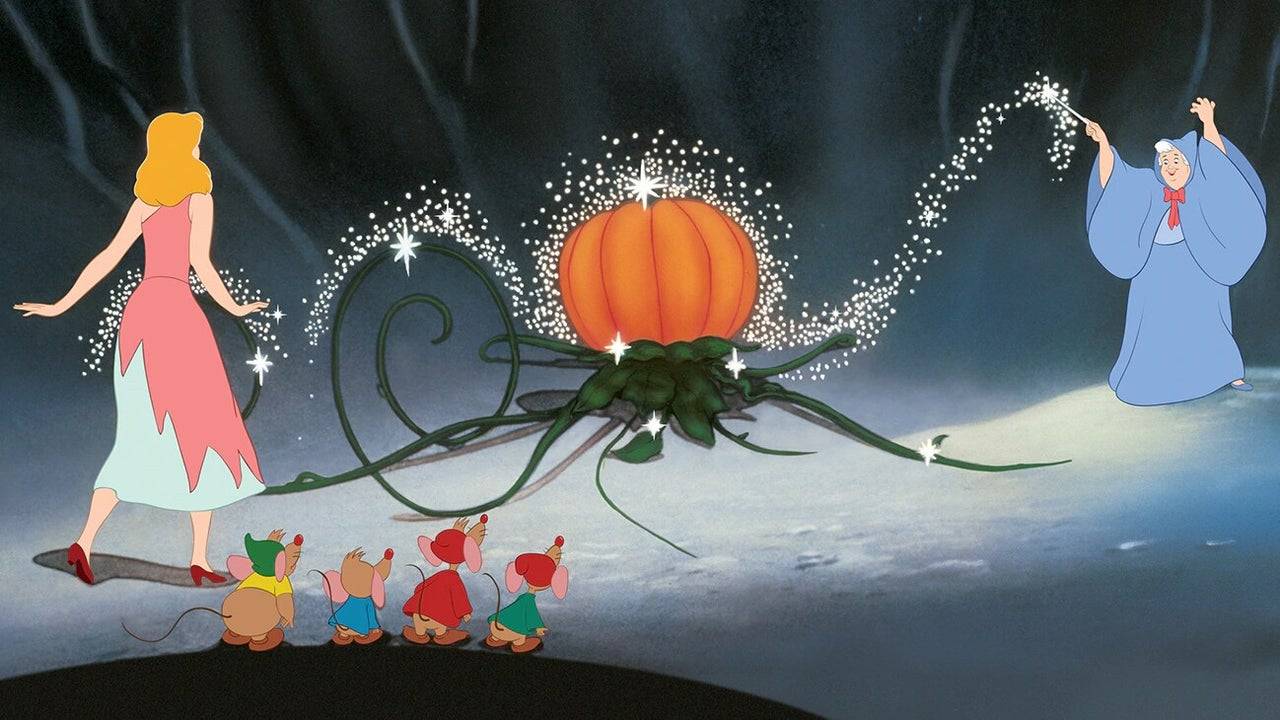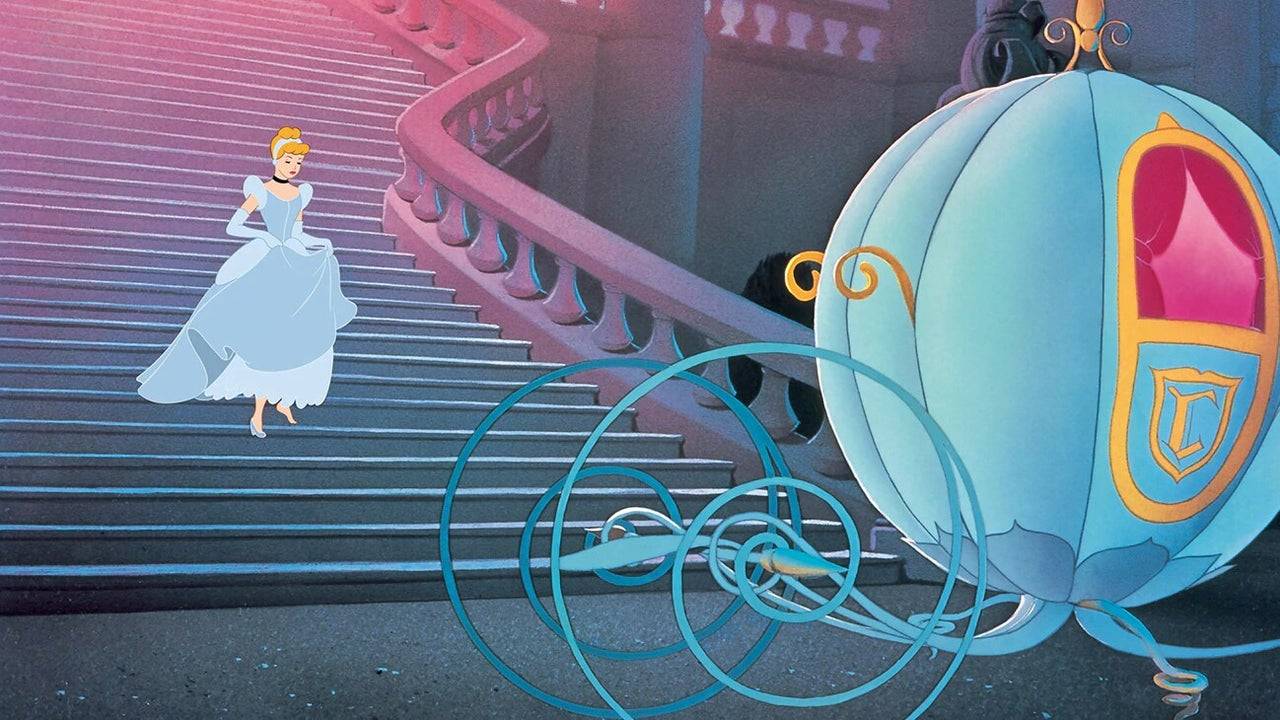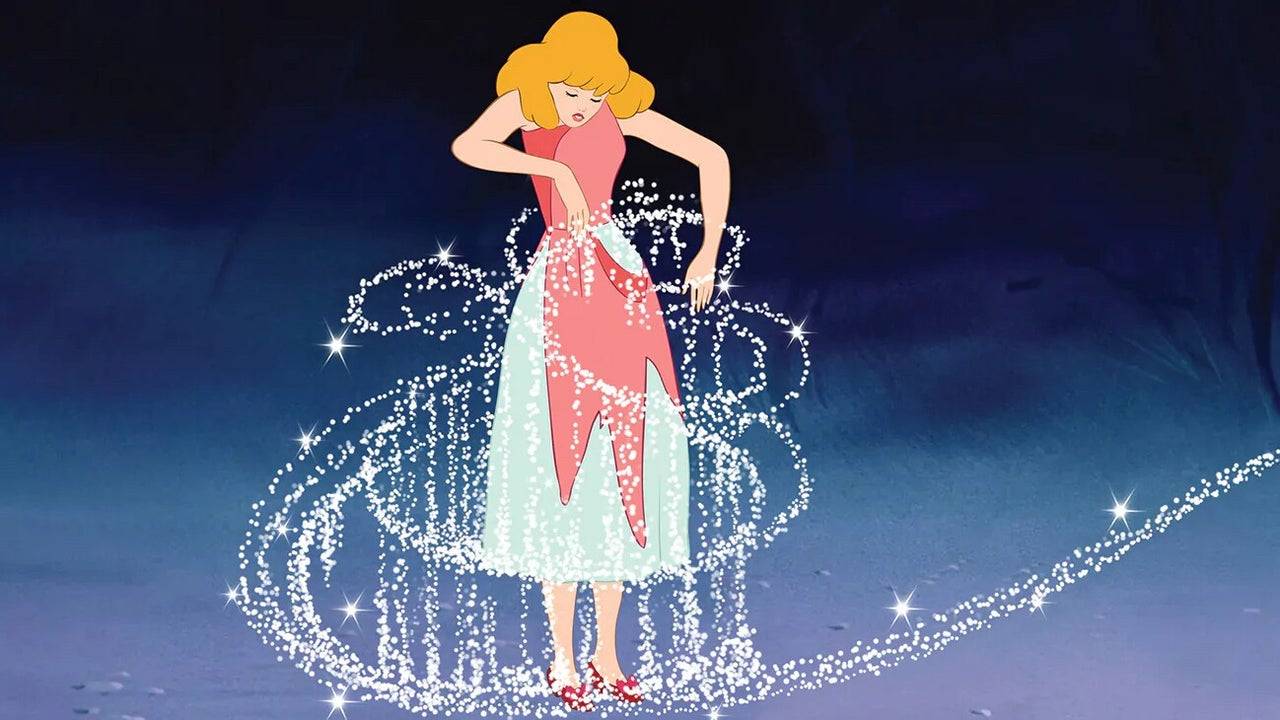"Cinderella at 75: How a Princess and Glass Slippers Revived Disney"
Just as Cinderella’s dream come true was set to end at midnight, so too was that of The Walt Disney Company in 1947 after being roughly $4 million in debt following the financial failures of Pinocchio, Fantasia, and Bambi due to World War II and other factors. However, thanks to this beloved princess and her iconic glass slippers, Disney as we know it was saved from having to end its own animation story well before its time.
As Cinderella celebrates its 75th anniversary for its wide release on March 4, we had the opportunity to speak with several individuals at Disney who continue to be inspired by this timeless rags-to-riches tale. It's a story that not only mirrors Walt Disney's own journey but also provided a beacon of hope for the company and the world as it sought to rebuild and find inspiration post-war.
The Right Film at the Right Time
To fully appreciate the significance of Cinderella, we must revisit Disney's transformative moment in 1937 with Snow White and the Seven Dwarfs. Its unprecedented success as the highest-grossing film until Gone with the Wind overtook it two years later enabled Disney to establish its Burbank studio, where it remains headquartered today, and embark on a new era of feature-length animated films.
Following Snow White, Disney's next venture, Pinocchio in 1940, carried a hefty budget of $2.6 million—about a million more than Snow White—but it resulted in a loss of approximately $1 million, despite its critical acclaim and two Academy Awards for Best Original Score and Best Original Song. This was not an isolated incident; Fantasia and Bambi also struggled to perform well, further deepening Disney's financial woes. The primary reason for these challenges was the outbreak of World War II, triggered by Germany's invasion of Poland in September 1939.
"Disney's European markets evaporated during the war, preventing films like Pinocchio and Bambi from reaching audiences," explained Eric Goldberg, co-director of Pocahontas and lead animator on Aladdin's Genie. "The studio was then co-opted by the U.S. government to produce training and propaganda films for the military. Throughout the 1940s, Disney shifted to creating Package Films such as Make Mine Music, Fun and Fancy Free, and Melody Time. While these projects were of high quality, they lacked a cohesive narrative."

Package Films were compilations of short cartoons assembled into feature-length films. Between the releases of Bambi in 1942 and Cinderella in 1950, Disney produced six such films, including Saludos Amigos and The Three Caballeros, which were part of the U.S. Good Neighbor Policy aimed at countering Nazi influence in South America. Although these films managed to break even, and Fun and Fancy Free reduced the studio's debt from $4.2 million to $3 million by 1947, they hindered Disney's ability to produce full-length animated features.
"I wanted to return to feature films," Walt Disney reflected in 1956, as quoted in The Animated Man: A Life of Walt Disney by Michael Barrier. "It required significant investment and time. But I was determined to move forward. My brother Roy and I had a heated discussion about it... It was one of my biggest frustrations... I said we either push ahead, or we liquidate and sell out."
At a critical juncture when Walt considered selling his shares and leaving the company, he and Roy opted for the riskier path, betting everything on their first major animated feature since Bambi. Failure could have spelled the end for Disney's animation studio.
"At that time, Alice in Wonderland, Peter Pan, and Cinderella were all in development, but Cinderella was chosen as the first to be produced due to its similarities to the successful Snow White," said Tori Cranner, Art Collections Manager at Walt Disney Animation Research Library. "Walt understood the post-war need for hope and joy. While Pinocchio is a remarkable film, it lacks the joyfulness of Cinderella. The world needed a story of rising from the ashes and finding beauty, and Cinderella was perfectly timed for that."
Cinderella and Disney’s Rags to Riches Tale
Walt's connection with Cinderella dates back to 1922 when he produced a short version at Laugh-O-Gram Studios, just before founding Disney with Roy. This short, inspired by Charles Perrault's 1697 version of the tale, which may have originated between 7 BC and AD 23 by Greek geographer Strabo, highlighted themes of good versus evil, true love, and dreams coming true, deeply resonating with Walt.

"Snow White was a kind and simple girl who believed in wishing and waiting for her Prince Charming," Walt Disney explained in a feature from Disney’s Cinderella: The Making of a Masterpiece. "Cinderella, however, was more practical. She believed in dreams but also in taking action. When Prince Charming didn’t appear, she went to the palace to find him."
Cinderella's resilience in the face of adversity, despite her mistreatment by her Evil Stepmother and Stepsisters, mirrored Walt's own journey from humble beginnings through numerous failures to achieving his dream through relentless effort.
Walt's early attempts to revive Cinderella as a Silly Symphony short in 1933 evolved into a more ambitious project by 1938, eventually becoming a feature film after over a decade of development delayed by the war and other challenges. This time allowed the film to mature into the beloved classic we cherish today.
"Disney excelled at reimagining timeless fairy tales with his unique touch, infusing them with heart and passion," Goldberg remarked. "These stories, originally grim cautionary tales, were transformed into universally appealing narratives, modernizing them for all audiences."
Cinderella's animal friends, including Jaq, Gus, and the birds, along with Lucifer the cat, provided comic relief and allowed deeper insight into Cinderella's character. The Fairy Godmother, redesigned by animator Milt Kahl to be more relatable and endearing, contributed to one of the most iconic scenes in cinematic history: the transformation of Cinderella's dress.
"Every sparkle in that transformation scene was hand-drawn and painted, which is mind-blowing," Cranner enthused. "There’s a magical moment where the magic pauses before the dress changes, adding to the scene's enchantment."
Disney's addition of the breaking glass slipper at the film's end underscored Cinderella's agency and strength, showcasing her as a proactive hero in her own story.
"Cinderella isn't just a passive character; she's strong and resourceful," Goldberg emphasized. "When the slipper breaks, she presents the other one she's kept, demonstrating her control and resilience."
Cinderella premiered in Boston on February 15, 1950, and was widely released on March 4 of that year, becoming an instant hit. With a budget of $2.2 million, it grossed $7 million, making it Disney's most successful film since Snow White and the sixth-highest grossing film of 1950. It received three Academy Award nominations, signaling Disney's triumphant return to narrative feature films.
"Critics hailed Cinderella as a return to form for Walt Disney," Goldberg noted. "It rekindled the studio's passion for storytelling, paving the way for future classics like Peter Pan, Lady and the Tramp, Sleeping Beauty, 101 Dalmatians, and The Jungle Book."
75 Years Later, Cinderella’s Magic Lives On
Seventy-five years on, Cinderella's influence remains profound, evident in the iconic castles at Walt Disney World and Tokyo Disneyland, and in the opening sequences of Disney films inspired by her tale and that of Sleeping Beauty.
"When we animated Elsa’s dress transformation in Frozen, we drew a direct connection to Cinderella," said Becky Bresee, lead animator on Frozen 2 and Wish. "The sparkles and effects in Elsa’s scene pay homage to Cinderella's legacy, despite the characters' differences."

The contributions of Disney's legendary Nine Old Men and Mary Blair to Cinderella's distinctive style and character depth are also noteworthy. As we reflect on this film's enduring impact, Eric Goldberg's words encapsulate its essence:
"The essence of Cinderella is hope," Goldberg concluded. "It teaches that with perseverance and strength, dreams can be realized, no matter the era."
-
 Jan 27,25Roblox: Bike Obby Codes (January 2025) Bike Obby: Unlock Awesome Rewards with These Roblox Codes! Bike Obby, the Roblox cycling obstacle course, lets you earn in-game currency to upgrade your bike, buy boosters, and customize your ride. Mastering the various tracks requires a top-tier bike, and thankfully, these Bike Obby codes deliver
Jan 27,25Roblox: Bike Obby Codes (January 2025) Bike Obby: Unlock Awesome Rewards with These Roblox Codes! Bike Obby, the Roblox cycling obstacle course, lets you earn in-game currency to upgrade your bike, buy boosters, and customize your ride. Mastering the various tracks requires a top-tier bike, and thankfully, these Bike Obby codes deliver -
 Feb 20,25Where to Preorder the Samsung Galaxy S25 and S25 Ultra Smartphones Samsung's Galaxy S25 Series: A Deep Dive into the 2025 Lineup Samsung unveiled its highly anticipated Galaxy S25 series at this year's Unpacked event. The lineup features three models: the Galaxy S25, S25+, and S25 Ultra. Preorders are open now, with shipping commencing February 7th. Samsung's web
Feb 20,25Where to Preorder the Samsung Galaxy S25 and S25 Ultra Smartphones Samsung's Galaxy S25 Series: A Deep Dive into the 2025 Lineup Samsung unveiled its highly anticipated Galaxy S25 series at this year's Unpacked event. The lineup features three models: the Galaxy S25, S25+, and S25 Ultra. Preorders are open now, with shipping commencing February 7th. Samsung's web -
 Jul 02,22Isophyne Debuts as Original Character in Marvel Contest of Champions Kabam introduces a brand-new original character to Marvel Contest of Champions: Isophyne. This unique champion, a fresh creation from Kabam's developers, boasts a striking design reminiscent of the film Avatar, incorporating copper-toned metallic accents. Isophyne's Role in the Contest Isophyne ent
Jul 02,22Isophyne Debuts as Original Character in Marvel Contest of Champions Kabam introduces a brand-new original character to Marvel Contest of Champions: Isophyne. This unique champion, a fresh creation from Kabam's developers, boasts a striking design reminiscent of the film Avatar, incorporating copper-toned metallic accents. Isophyne's Role in the Contest Isophyne ent -
 Jan 11,25Jujutsu Kaisen Phantom Parade: Tier List Revealed This Jujutsu Kaisen Phantom Parade tier list helps free-to-play players prioritize character acquisition. Note that this ranking is subject to change with game updates. Tier List: Tier Characters S Satoru Gojo (The Strongest), Nobara Kugisaki (Girl of Steel), Yuta Okkotsu (Lend Me Your Stren
Jan 11,25Jujutsu Kaisen Phantom Parade: Tier List Revealed This Jujutsu Kaisen Phantom Parade tier list helps free-to-play players prioritize character acquisition. Note that this ranking is subject to change with game updates. Tier List: Tier Characters S Satoru Gojo (The Strongest), Nobara Kugisaki (Girl of Steel), Yuta Okkotsu (Lend Me Your Stren
